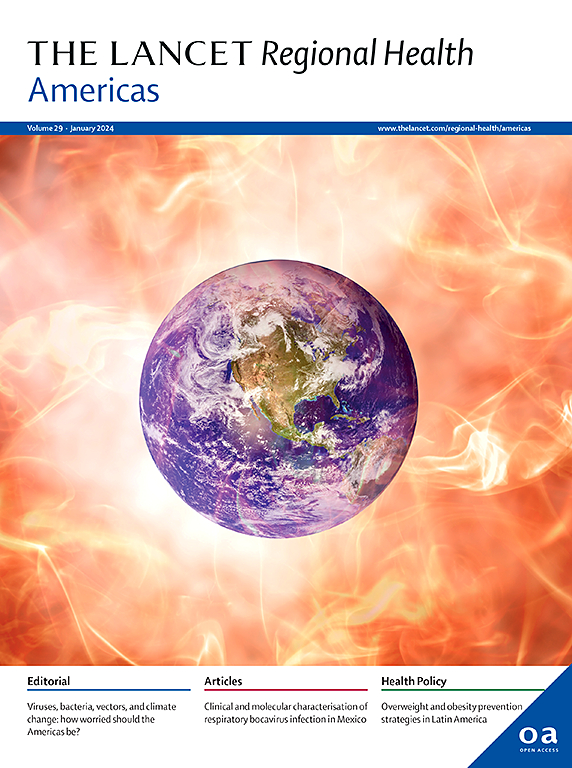美国非法药物供应中芬太尼共存的时间和空间趋势:序列横截面分析
IF 7
Q1 HEALTH CARE SCIENCES & SERVICES
引用次数: 0
摘要
背景芬太尼及其类似物是造成美国吸毒过量死亡的主要原因。人们担心吸毒者会在不知情的情况下接触到芬太尼,从而增加他们吸毒过量死亡的风险。本研究探讨了芬太尼与其他缉获毒品共存的时间趋势和空间变化。方法我们确定了 9 种相关物质或物质类别中的芬太尼共存情况(非芬太尼物质样本中同时含有芬太尼的比例):甲基苯丙胺、大麻、可卡因、海洛因、俱乐部毒品、致幻剂以及处方类阿片、兴奋剂和苯二氮卓。我们使用了 2013 年 1 月至 2023 年 12 月期间美国 50 个州和哥伦比亚特区从国家法医实验室信息系统(美国现有最大的非法药物供应数据库)获得的毒品报告序列横截面数据。随着时间的推移,芬太尼与所有受检物质的共存率呈单调上升趋势(Mann-Kendall p < 0.0001)。在全国范围内,芬太尼与海洛因样本的共存率最高(约 50%),但与甲基苯丙胺(≤1%)、可卡因(≤4%)和其他毒品样本的共存率相对较低。然而,2017-2023年,东北部几个州的可卡因和甲基苯丙胺共存率已增至10%以上。释义芬太尼最常与海洛因共存,但在某些地区,芬太尼在兴奋剂供应中的出现率正在上升,可能会带来不成比例的高过量风险。本文仅代表作者观点,不代表美国食品药品管理局或美国卫生与公众服务部的观点或政策。本文章由计算机程序翻译,如有差异,请以英文原文为准。
Temporal and spatial trends of fentanyl co-occurrence in the illicit drug supply in the United States: a serial cross-sectional analysis
Background
Fentanyl and its analogs contribute substantially to drug overdose deaths in the United States. There is concern that people using drugs are being unknowingly exposed to fentanyl, increasing their risk of overdose death. This study examines temporal trends and spatial variations in the co-occurrence of fentanyl with other seized drugs.
Methods
We identified fentanyl co-occurrence (the proportion of samples of non-fentanyl substances that also contain fentanyl) among 9 substances or substance classes of interest: methamphetamine, cannabis, cocaine, heroin, club drugs, hallucinogens, and prescription opioids, stimulants, and benzodiazepines. We used serial cross-sectional data on drug reports across 50 states and the District of Columbia from the National Forensic Laboratory Information System, the largest available database on the U.S. illicit drug supply, from January 2013 to December 2023.
Findings
We analyzed data from 11,940,207 samples. Fentanyl co-occurrence with all examined substances increased monotonically over time (Mann-Kendall p < 0.0001). Nationally, fentanyl co-occurrence was highest among heroin samples (approx. 50%), but relatively low among methamphetamine (≤1%), cocaine (≤4%), and other drug samples. However, co-occurrence rates have grown to over 10% for cocaine and methamphetamine in several Northeast states in 2017–2023.
Interpretation
Fentanyl co-occurs most commonly with heroin, but its presence in stimulant supplies is increasing in some areas, where it may pose a disproportionately high risk of overdose.
Funding
This work was partly supported by FDA grant U01FD00745501. This article reflects the views of the authors and does not represent the views or policies of the FDA or US Department of Health and Human Services.
求助全文
通过发布文献求助,成功后即可免费获取论文全文。
去求助
来源期刊

Lancet Regional Health-Americas
Multiple-
CiteScore
8.00
自引率
0.00%
发文量
0
期刊介绍:
The Lancet Regional Health – Americas, an open-access journal, contributes to The Lancet's global initiative by focusing on health-care quality and access in the Americas. It aims to advance clinical practice and health policy in the region, promoting better health outcomes. The journal publishes high-quality original research advocating change or shedding light on clinical practice and health policy. It welcomes submissions on various regional health topics, including infectious diseases, non-communicable diseases, child and adolescent health, maternal and reproductive health, emergency care, health policy, and health equity.
 求助内容:
求助内容: 应助结果提醒方式:
应助结果提醒方式:


